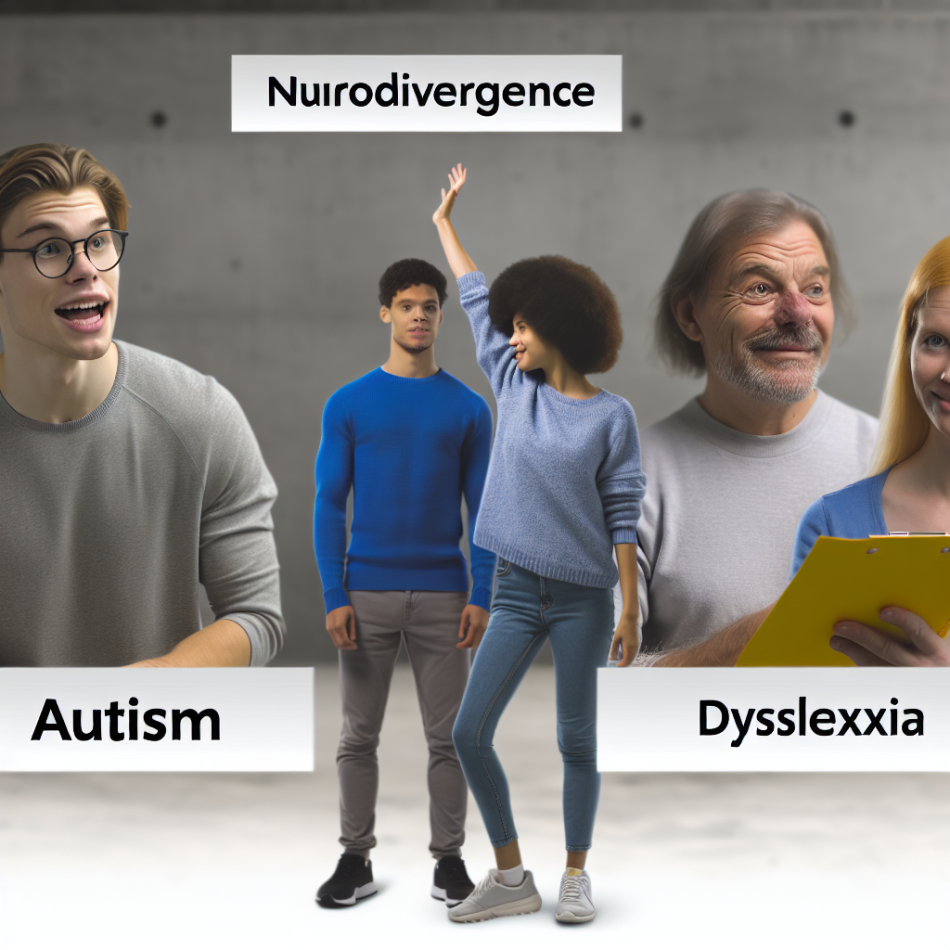Understanding Neurodivergence: Beyond the ‘Typical’ Mind
Neurodivergence refers to variations in how the brain processes information, learns, or interacts with the world, diverging from what is considered ‘neurotypical.’ These differences are not deficits but natural variations in human cognition. This article explores common examples of neurodivergence, such as ADHD, autism, and dyslexia, while highlighting their unique traits and the importance of fostering inclusive understanding.
Common Forms of Neurodivergence
Neurodivergence encompasses a wide range of conditions, each with distinct characteristics. Below are some widely recognised examples:
- Attention Deficit Hyperactivity Disorder (ADHD): Characterised by differences in attention regulation, impulsivity, and hyperactivity. Individuals may thrive in dynamic environments but struggle with tasks requiring sustained focus.
- Autism Spectrum Disorder (ASD): Involves variations in social communication, sensory processing, and repetitive behaviours. Autistic individuals often have intense interests and may experience the world with heightened or reduced sensitivity to stimuli.
- Dyslexia: A language-based neurodivergence affecting reading, writing, and spelling. Many dyslexic individuals excel in problem-solving, spatial reasoning, or creative thinking.
- Dyspraxia (Developmental Coordination Disorder): Impacts motor coordination and planning. Tasks like tying shoelaces or handwriting may be challenging, but strengths often include innovation and verbal communication.
- Tourette’s Syndrome: Known for involuntary vocal or motor tics. Contrary to stereotypes, many with Tourette’s lead fulfilling lives, often alongside heightened creativity or empathy.
These examples illustrate the diversity of neurodivergent experiences, challenging the notion of a single ‘normal’ way of thinking or behaving.
The Overlapping Spectrum: Co-Occurrence and Unique Traits
Neurodivergence rarely fits into rigid categories. Many individuals experience overlapping traits or multiple conditions simultaneously. For instance, someone with autism might also have ADHD, while a dyslexic person could exhibit dyspraxic tendencies. This overlap underscores the complexity of neurodivergence and the need for personalised support.
Moreover, neurodivergent individuals often develop compensatory strategies to navigate neurotypical expectations. An autistic person might use stimming (repetitive movements) to manage sensory overload, while someone with ADHD could rely on visual planners to structure their time. Recognising these adaptations fosters empathy and reduces stigmatisation.
The Importance of Awareness and Acceptance
Misconceptions about neurodivergence persist, often framing it as a problem to be ‘fixed.’ However, the neurodiversity movement advocates for acceptance, emphasising that differences in cognition are natural and valuable. Schools, workplaces, and communities benefit when they accommodate diverse thinking styles—for example, offering flexible deadlines for ADHD employees or quiet spaces for autistic students.
Key steps toward inclusivity include:
- Educating society about neurodivergent conditions beyond stereotypes.
- Designing environments that reduce sensory overload (e.g., dim lighting, noise-cancelling zones).
- Prioritising listening to neurodivergent voices in policy-making.
By shifting from ‘tolerance’ to celebration, we unlock the potential of neurodivergent individuals, enriching collective innovation and problem-solving.
Conclusion: Embracing Cognitive Diversity
Neurodivergence, in its many forms, reflects the beautiful complexity of human cognition. From ADHD to autism, dyslexia to dyspraxia, each condition brings unique strengths and challenges. Understanding these differences—and rejecting outdated notions of ‘normalcy’—creates a society where everyone can thrive. By prioritising awareness, adaptation, and acceptance, we move closer to a world that values all minds equally.
